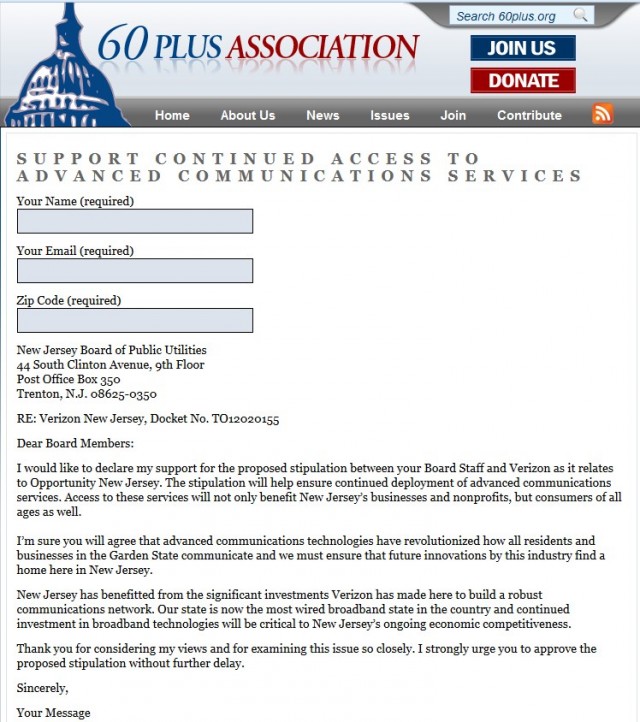 Aereo will face off with broadcasters next week in the U.S. Supreme Court over the legality of the online video provider’s business plan — using dime-sized individual antennas to receive over-the-air local stations and stream them to paying subscribers over the Internet.
Aereo will face off with broadcasters next week in the U.S. Supreme Court over the legality of the online video provider’s business plan — using dime-sized individual antennas to receive over-the-air local stations and stream them to paying subscribers over the Internet.
On April 22, Aereo will appeal for its future as it presents its case to the high court in defense of a consumer’s right to access local stations over the air, even if a third-party installs an antenna on their behalf.
Broadcasters consider Aereo just another end run around copyright law, arguing the online service has no right to profit off the resale of their signals to consumers without permission and compensation.
Today Aereo launched a website, ProtectMyAntenna.org that frames its legal case as a basic viewing rights issue. Aereo says the broadcasters’ intransigence is nothing new — they also fought cable television and the videocassette recorder in the courts in the past, suggesting both technologies were stealing their signals.
 “What is at stake in this case is much bigger than Aereo,” says the website. “We believe that consumers are entitled to use a modern, cloud-based, version of an antenna and DVR and that consumers should not be constrained to 1950’s era technology to watch free-to-air broadcast television. The broadcasters’ positions in this case, if sustained, would impair cloud innovation and threaten the myriad benefits to individuals, companies, and the economy at large of the advances in cloud computing and cloud storage.”
“What is at stake in this case is much bigger than Aereo,” says the website. “We believe that consumers are entitled to use a modern, cloud-based, version of an antenna and DVR and that consumers should not be constrained to 1950’s era technology to watch free-to-air broadcast television. The broadcasters’ positions in this case, if sustained, would impair cloud innovation and threaten the myriad benefits to individuals, companies, and the economy at large of the advances in cloud computing and cloud storage.”
The Obama Administration has sided with the broadcasters and is seeking time to speak before the Court on the broadcasters’ behalf. Consumer groups are largely lined up behind Aereo, claiming online video competition is something worth protecting.
The crux of the case is likely to be which side is correct in their interpretation of what defines a “public performance,” which makes all the difference in determining whether Aereo must pay broadcasters or not. Private viewing at home is protected by earlier case-law and if Aereo is found to simply be facilitating home viewing, it will likely be deemed legal. Aereo assigns a single antenna to each customer, a fact they hope will strengthen its argument they are not redistributing programming to the masses. How the signal gets to the customer, over an antenna cable or the Internet, should not make any difference.
Broadcasters are hoping for a different interpretation — one popular in California courts, that would find any redistribution of programming over the Internet to be a public performance. Several other ventures have tried to launch virtual cable systems that streamed over the air stations and all were quickly shut down by west coast courts. Aereo has better lawyers, deeper pockets, and apparently a better argument that won favor in several eastern U.S. courts last year.
The Supreme Court will ultimately decide Aereo’s fate. If it loses, expect it to close down operations immediately. If Aereo wins, the company expects to continue expanding into other television markets across the country.
Aereo currently provides service in 11 U.S. cities.
[flv]http://www.phillipdampier.com/video/Yahoo Aereo CEO Chet Kanojia on the Future of TV 4-17-14.flv[/flv]
Katie Couric from Yahoo! News sat down for an extensive interview about Aereo with its CEO Chet Kanojia. Kanojia argues broadcasters were already well-compensated when they received free spectrum for their stations. (20:20)


 Subscribe
Subscribe Telus, Bell and Rogers charge customers as much as 45 percent less on wireless service where they face a fourth regional competitor in a case of suspected predatory pricing that could threaten the viability of competition in Canada’s wireless marketplace.
Telus, Bell and Rogers charge customers as much as 45 percent less on wireless service where they face a fourth regional competitor in a case of suspected predatory pricing that could threaten the viability of competition in Canada’s wireless marketplace.
 New Jersey’s Board of Public Utilities received more than 460 identical e-mails urging the regulator to approve Verizon’s proposed settlement permitting it to renege on broadband expansion commitments that would have brought high-speed Internet to every citizen in the state that wanted it.
New Jersey’s Board of Public Utilities received more than 460 identical e-mails urging the regulator to approve Verizon’s proposed settlement permitting it to renege on broadband expansion commitments that would have brought high-speed Internet to every citizen in the state that wanted it. “I hope you are doing well. I have a favor to ask,” one e-mail read. “I’m working on a project for our client, Verizon, and they need some signatures to an online petition. Verizon wants to expand its offerings in New Jersey, but needs approval from the state. Higher-speed Internet, more FiOS, etc.”
“I hope you are doing well. I have a favor to ask,” one e-mail read. “I’m working on a project for our client, Verizon, and they need some signatures to an online petition. Verizon wants to expand its offerings in New Jersey, but needs approval from the state. Higher-speed Internet, more FiOS, etc.”
 If you have started to confuse the Washington Post editorial page with that of the Wall Street Journal, you are not alone.
If you have started to confuse the Washington Post editorial page with that of the Wall Street Journal, you are not alone.
 Just twenty-five years ago, Romanians under the dictatorship of Nicolae “The Genius of the Carpathians” Ceaușescu didn’t have to worry about the Internet. The country was plagued by electricity outages and economic austerity imposed to pay off the Romania’s foreign debt.
Just twenty-five years ago, Romanians under the dictatorship of Nicolae “The Genius of the Carpathians” Ceaușescu didn’t have to worry about the Internet. The country was plagued by electricity outages and economic austerity imposed to pay off the Romania’s foreign debt.